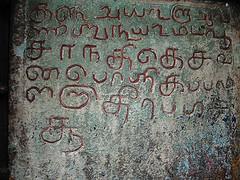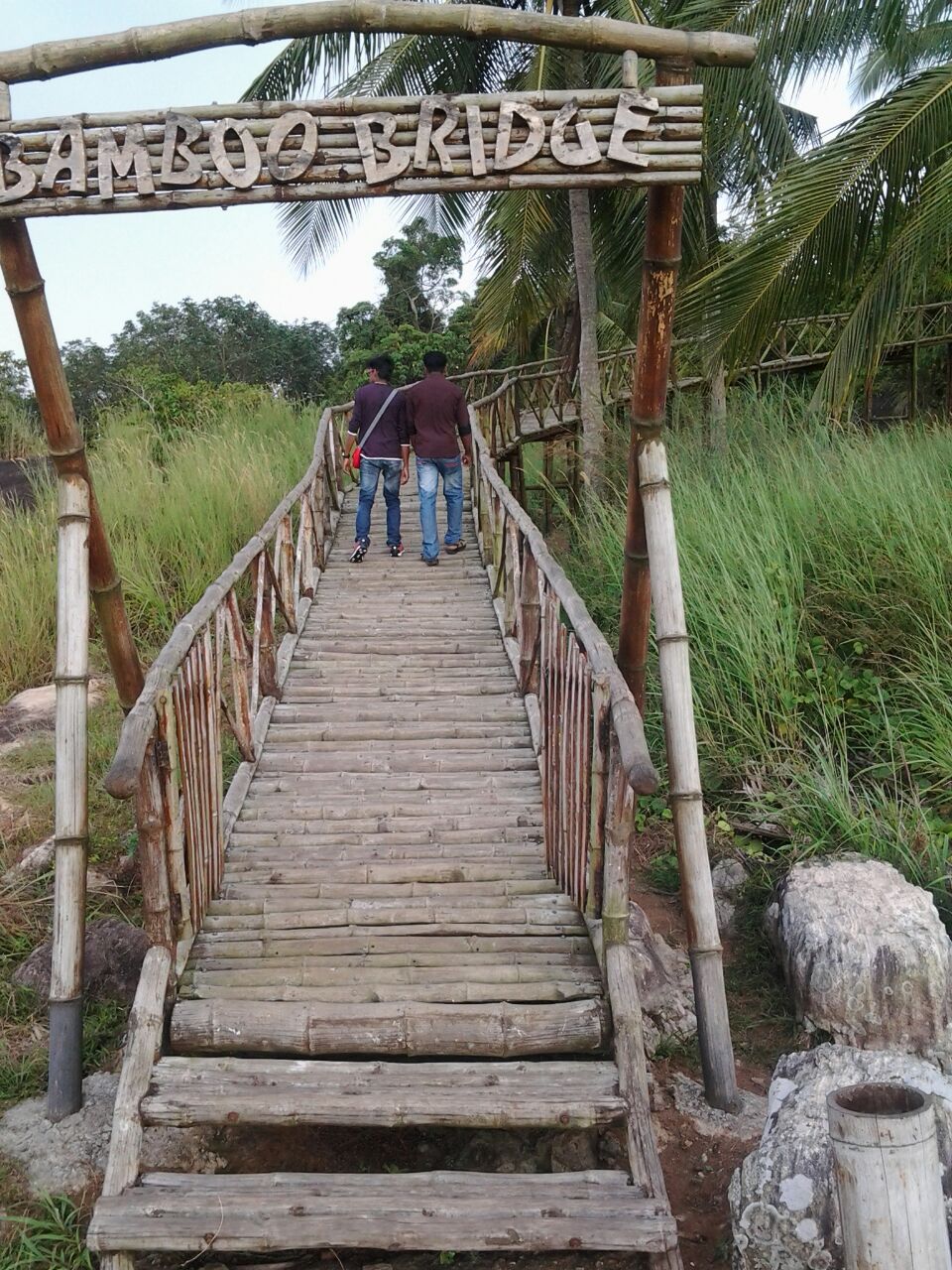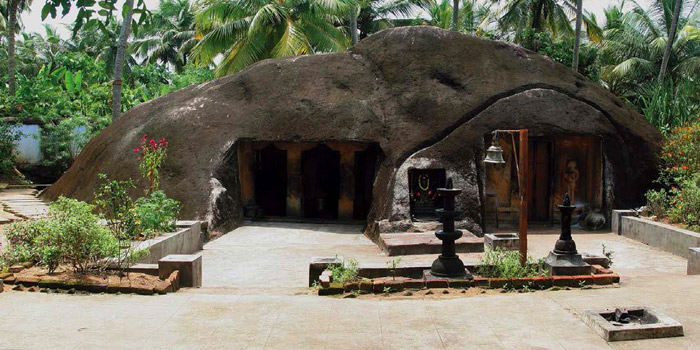Vizhinjam (വിഴിഞ്ഞം) rock cut cave is located in Vizhinjam village, Athiyanoor (അതിയന്നൂർ) taluk in Thiruvananthapuram (തിരുവനന്തപുരം) district, Kerala State, India PIN 695521. The cave is located 14 km towards South from District head quarters Thiruvananthapuram. Vizhinjam is located 2 km from Athiyanoor; 3 km from Kottukal (കൊടുക്കൽ ); and 3 km from Kovalam beach (കോവളം ബീച്). The Latitude and Longitude coordinates in degrees, minutes, seconds decimal and degrees decimal of Vizhinjam is 8°22′45″N (8.3932) and 76°59′29″E (77.0046) respectively. The elevation / altitude of Vizhinjam is 71 meters above Sea level. As per 2011 Population Census 2011, the village has population 20714 (males 10277 and females 10437) and 5040 families in total The village is also the natural port located close to international shipping routes and it is an international deep-water multi-purpose shipping hub. Neyyattinkara (നെയ്യാറ്റിന്കര), Kollankodu (കൊല്ലങ്കോട് ), Nedumangad (നെടുമങ്ങാട്) are the nearby Cities to Vizhinjam.
Architecture
The Vizhinjam rock cut cave temple premises, under the maintenance of ASI, is located near Vizhinjam bus-stand. Like the Kilmavilangai and Mahendravadi rock cut caves in Tamil Nadu, Vizhinjam cave is excavated on a small boulder measuring about 3 m (9 feet 10 inches) in height and 3.50 m (11 feet 5 inches) in width. On the eastern face of this outcrop, is carved in a single cell sanctum measuring about 1 m (3 feet 2 inches) east-west in length, 0.70 m (2 feet 3 inches) north-south in width and 1.50 m (4 feet 11 inches) in height. The roof slopes towards east. The rear, south and north walls left unfinished. The single cell sanctum houses a loose sculpture of (east facing) Vinadhara Dakshinamurthy (an aspect of Lord Shiva as a guru (teacher) of all types of knowledge and the great teacher of music) of later period.
There are two plain square pilasters (door frames) cut on either side of the sanctum entrance. The pilasters directly supports the prastara component uttira. Towards the south and north of the pilasters there are two rock cut niches housing bas relief images. The right side niche (formed without pilasters) houses the sthanaka Shiva accompanied by two dwarf images on either side. Shiva appear standing on his right foot planted on the even floor (Sthitha paadam) and the bent (folded) left foot firmly stamping upon the head of the demon "Muyalagan". The demon Muyalagan appear seated on two squatted legs. His left hand holds the bow. A roughly sculpted dwarf gana appears on the left side of Muyalagan.
Lord Shiva drapes a piece of loin cloth (A loincloth is a long piece of cloth, passed between the thighs and wound around the waist) and knotted waist cloth. Shiva appears with two arms and the left forearm holds the tall bow; the upper left hand holds ‘mazhu’ (the axe); the right fore arm holds the arrow while the upper right hand in ardhapathaka (mudra) gesture. The jatamakuta is the hair dress with head band (நெற்றிப்பட்டம்). The lord wears sarapali around his neck.and the Yagnopavita is worn in niveda fashion. He also wears a palm-leaf coil as ear-ring at his left ear lobe and the right ear lobe locked with kundala.
The left side niche (formed without pilasters) houses the two bas relief images. The right side male image appears in dancing posture and his left leg is held in parsvatha posture while his right leg held in swastika posture. The face is tilted towards his right side. The lord wears conical jatamakuta. The left ear lobe is adorned with palm-leaf coil as ear-ring. The ankle is adorned with beaded chain.
The left side female image rests her left hand on her hip and the right hand rests on her chin. The waist cloth tied with knots. The left leg is damaged and the right leg plated on the floor. The identity of these two images could not be established clearly.
History
In the words of Ptolemy the territory of Ay (ஆய்) flourished in the south of the Chera kingdom and extended from Nelcynda to Kumari and the Pandya kingdom lay only 'past Komaria.' According to Robert Sewell Ayes were the rulers of the hill country. Chera dynasty established themselves in major portions of Chera land (present northern Kerala) as the vital force only after Ay dynasty (ஆய் வம்சம்) established themselves around the Potiya hill (பொதியமலை), the southern most section of the Western Ghats. (presently the southern Kerala). So the Ay dynasty ruled the land between Nagercoil and Thiruvalla and Vizhinjam, the port town, was once the capital of many dynasties including Ay dynasty. Important Ay rulers are Ay Andiran (ஆய் அண்டிரன்), Titiyan I (முதலாம் திதியன்), Atiyan (அதியன்), Titiyan II (இரண்டாம் திதியன்) and Nanchil Porunan (நாஞ்சில் பொருநன்). Purananuru (புறநானூறு) extols Ay Andiran as the philanthropic ruler who independent ruled the potiyi hills. He is praised for his patronage as Vel Ay (வேல் ஆய்) and Ma-Vel Ay (மாவேள் ஆய்) by the Sangam poets in Purananuru. Ay Andiran drove Pandyas from his territory and came to prominence around 96 - 140 A.D. Titiyan I was praised as 'Potiyir Selvan' (பொதியிற் செல்வன்). During the time of Atiyan Ay kingdom got disintegrated. It seems that Alakiyapandiyan waged war over Ay kingdom and defeated Atiyan and Ay kingdom was reduced as a tributary of Pandya kingdom. Later the battle between Talayalankanattu Ceru Venra Nedunceliyan Pandya king (தலையாலங்கானத்து செரு வென்ற பாண்டியன் நெடுஞ்செழியன்) and Titiyan II clashed at the historical battle at Talayalankanam (தலையாலங்கானம்) and sealed the fate of the Ay kingdom.
Ay dynasty was later known as Venad (வேள்நாடு / வேணாடு) dynasty and the kingdom located to the south of Chera kingdom. It was later on known as the Tiruvidankur dynasty (திருவிதாங்கூர் வம்சம்). Karunandadakkan (857-885 AD) (கருணானந்தக்கண்) an illustrious Ay king ruled with his capital at Vizhinjam. His earliest inscription in South India found dated in the Kali era (கலி வருடம்). It throws light on the working of ancient highways (salais) or Vedic colleges. According to the Huzur Office (copper) plates Ay (Vrishni Kula) King Karunandadakkan built the Parthivapuram Parthasarathy Temple (பார்த்திவபுரம் பார்த்தசாரதி கோவில் ) and consecrated in 857 A.D. Vikramaditya Varaguna (885-925) succeeded Karunandadakkan. The Paliyam Copper plate of Vikramaditya Varaguna (885-925) (விக்கிரமாதித்ய வரகுணா) records the grant of an extensive landed property to the Buddhist of Srimulavasa Vihara (ஸ்ரீமூலவாச விஹாரை) by the ruler. The Copper Plates indicates the origin of Ay from Ayars. (Ayars also known as Yadavas). .Ayakkudi (ஆயக்குடி) near Aralvaymoli (ஆரல்வாய்மொழி) gives some idea about Aye kingdom of Sangam age.
The Chola Empire Parantaka I (907 - 955) Chola (முதலாம் பராந்தக சோழன்) defeated Maravarman Rajasimha (மாறவர்மன் இராஜசிம்ஹன்), the Pandya king and annexed the South Kerala and Nanchil Nadu (Tiruvidankur) during 10th century A.D. The inscriptions of Parantaka I are found in Suchindram.
This land was also the scene of many battles. In 788 A.D, Jatilavarman Parantaka (Maranjadayan) the Pandya king waged a war over Ay kingdom and encircled Vizhinjam port. The Pandya conquered the Ays and made it a tributary state. Also military campaigns between the Kulasekara rulers (rulers of Venadu) and the later Cholas took place in this region. Vizhinjam also seems to have served as the former Dutch and British factory.
Temple timings: 0900 - 1800 hrs. It remains closed on Mondays.
Best Season: October to March
The Vizhinjam International Transhipment Deep water Multipurpose Seaport is an ambitious project taken up by Government of Kerala. It is designed primarily to cater container transhipment besides multi-purpose and break bulk cargo.
How to get there?
Nearest Bus-station: K-S-R-T-C-Vizhinjam-Bus-Station. A good network of roads connect Vizhinjam with several tourist destinations. within Kerala and India. State buses and inter-state buses can be availed to reach Vizhinjam.
Nearest Railwaystation: Nemem Railway Station , Balabnramapuram Railway Station are the very nearby railway stations to Vizhinjam. How ever Trivandrum Central Railway Station is major railway station 13 KM near to Vizhinjam
Nearest Airport: Trivandrum International Airport- 14 KM
Reference
- Archaeological Survey of India. Thrissur Circle. (http://www.asithrissurcircle.in/Monuments.html)
- Historical background of Travancore - Shodhganga (PDF)
- History of South India – Part 5: Kingdoms of the Sangam Period - The Chera Dynasty. Bharat: An Untold Story.
- Rock cut cave temple, Vizhinjam. Travelogues of a Compulsive Roamer. Saturday, 9, 2014
- Vishnu temple of Ay Dynasty. Varnam. February 2, 2005
- Vizhinjam Cave Temple. Wikipedia
- Vizhinjam in historical perspective. The Hindu July 27. 2015
- Vizhinjam Rock Cut Cave Temple. Indian Holiday.com
- Vizhinjam Rock Cut Cave, Thiruvananthapuram. Keralatourism.org
- விழிஞம் குடைவரைக்கோயில் இரா. கலைக்கோவன் Varalaru.com
YouTube
Vizhinjam's cave temple wows tourists by asianetcablevision




















